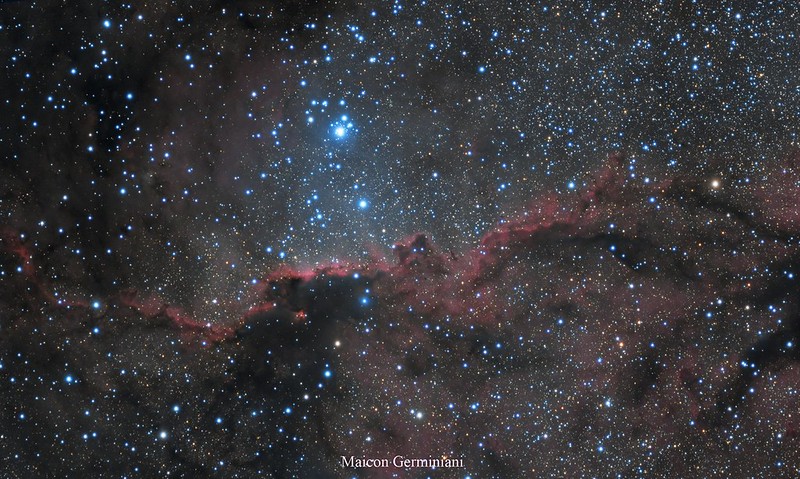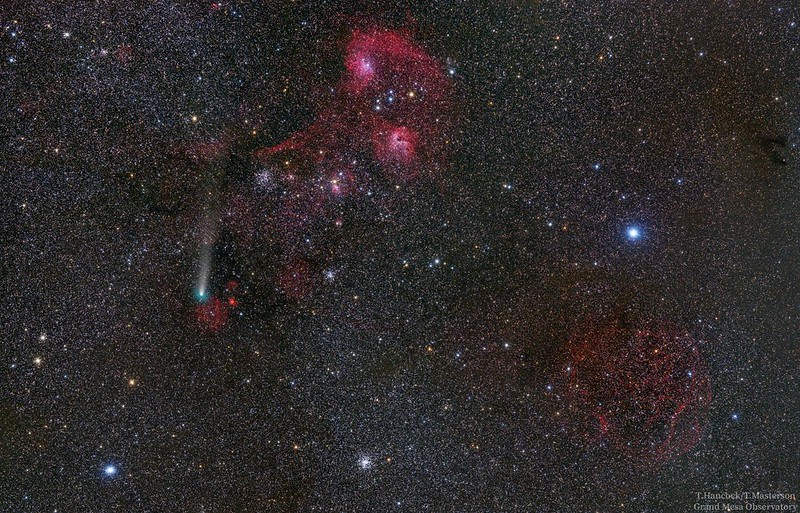Post
by KuriousGeorge » Sat Sep 08, 2018 4:47 am
NGC 7217. KG Observatory.
NGC 7217 is an unbarred spiral galaxy 50 million light-years from Earth in the constellation of Pegasus. It is receding from us at approximately 952 kilometers per second.
It is an active galaxy with an active galactic nucleus (a compact region at the center of a galaxy that has a much higher than normal luminosity, probably caused by accretion of mass by a supermassive black hole at the center of its host galaxy).
NGC 7217’s main features are the presence of three optical ring-like zones of stars concentric to its bright nucleus. It has a tight, flocculent spiral structure with two spiral arms in the region of the outer ring. This suggests that NGC 7217’s central regions have suffered several starbursts. The outer ring is dominated by bright blue stars and is the location of most of the recent star formation in the galaxy. Although the galaxy is very gas poor for a spiral, this ring is also where we find the hydrogen gas to be concentrated. The galaxy is surrounded by an extensive, nearly circular luminous halo.
Other features this galaxy has are the presence of a number of stars rotating in the opposite direction around the galaxy’s center to most of them and two distinct stellar populations: one of intermediate age on its innermost regions and a younger, metal-poor on its outermost ones. An additional noteworthy feature is a symmetric ring of dust that surrounds the nucleus. Other dust lanes are seen mainly on the near side of the galaxy.
It has been suggested these features were caused by a merger with another galaxy and, in fact, computer simulations show that NGC 7217 could have been a large lenticular galaxy that merged with one or two smaller gas-rich ones, becoming the spiral galaxy we see today.
Imaging telescope or lens:Planewave CDK24
Imaging camera:FLI Proline 16803
Mount:Planewave L600
Guiding camera:Starlight Xpress Ultrastar
Focal reducer:None
Software:Planewave PWI4, Planewave PWI3, PixInsight 1.8, Maxim DL6, PHD Guiding 2, Neat Image V7, Photoshop CS3, Sequence Generator Pro
Filters:Astrodon 50mm R, Astrodon 50mm B, Astrodon 50 mm G, Astrodon 50mm L
Accessories:FLI CFW-5-7, Astrodon Monster MOAG, Hedrick Focuser, Planewave Delta-T, Planewave EFA
Resolution: 1448x1379
Dates: Sept. 4, 2018, Sept. 5, 2018, Sept. 6, 2018
Frames:
Astrodon 50 mm G: 24x300" -20C bin 1x1
Astrodon 50mm B: 24x300" -20C bin 1x1
Astrodon 50mm L: 27x300" -20C bin 1x1
Astrodon 50mm R: 24x300" -20C bin 1x1
Integration: 8.2 hours
Darks: ~20
Flats: ~80
Flat darks: ~80
Bias: ~20
Avg. Moon age: 24.72 days
Avg. Moon phase: 24.48%
Mean SQM: 21.50
Astrometry.net job: 2238974
RA center: 331.965 degrees
DEC center: 31.360 degrees
Pixel scale: 0.468 arcsec/pixel
Orientation: 179.240 degrees
Field radius: 0.130 degrees
Locations: KG Observatory, Julian, CA, United States
Data source: Backyard
-
Attachments
-

 NGC 6188 by maicon germiniani, no Flickr[/img3]
NGC 6188 by maicon germiniani, no Flickr[/img3] Comet 21P in Auriga by Transient Astronomer, on Flickr
Comet 21P in Auriga by Transient Astronomer, on Flickr